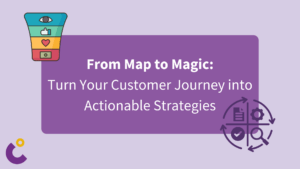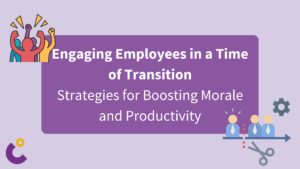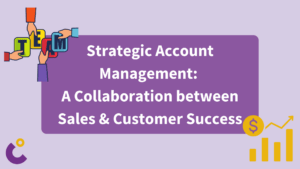
The Chief Customer Officer: Why Your Company Needs One
Amy Downs
First Published: February 22, 2016
We often highlight why Customer Obsession is critical for businesses to succeed. I’ve also talked about creating customer-centric core values to serve as the bedrock of corporate culture. None of this is possible without a person whose primary mission is to create a team-of-one environment and to sustain it for the long term. And that direction has to come from the C Suite. Enter the CCO (Chief Customer Officer).
In short, the Chief Customer Officer is responsible for:
- Educating the rest of the C Suite on the importance of Customer Obsession to long term sustainable success
- Putting customer focused metrics at the front end of business strategy
- Helping each department to recognize, activate and cultivate a positive impact on customers, even if that impact is indirect
1. Educating the rest of the C Suite on the importance of Customer Obsession to long term sustainable success
First off, education is key. A Chief Customer Officer’s top priority is to consistently educate the C Suite on the importance of keeping customers front and center. If a company hires a Chief Customer Officer to begin with, it’s safe to say there’s already a level of buy-in. However, that’s only the beginning. A Chief Customer Officer then must work within leadership to re-architect strategy such that customer loyalty is a constantly measured and motivating force at the heart of every department’s daily activities.
2. Putting customer focused metrics at the front end of business strategy
As for metrics, at the outset of his or her tenure it’s vital for a Chief Customer Officer to establish the methods by which the business will measure customer happiness. If we don’t measure it, it doesn’t exist. Many companies are so focused on financial performance that they forget all the steps that come between conceiving a product, making a sale and ensuring that product continues to work as promised. It’s mandatory that we check-in with customers along the way and adjust our processes – not just to keep them happy, but to let them know they have a voice in the business and that we hold ourselves accountable for our services.
For Lifesize, that metric is the Net Promoter Score; and the Net Promoter System is an operational rhythm built into the fabric of our business, connecting our team-of-one to our customers. We then look at renewals, which are the life-blood of our business. In a SaaS driven world, retention and the customer lifetime value (CLTV) is the ultimate key to success. We also measure cross-sell, upsell, referrals and word of mouth successes. And we use these numbers to drive our business forward. A successful Chief Customer Officer is one who can strongly influence a cultural shift in the business to focus on customers. In order to do this, it’s important to continually keep all employees connected to customers. One way we do this at Lifesize is by holding a weekly all employee meeting we call “Town Hall”. During this meeting, we share all good things going on in our business. We introduce our newbies (new employees), talk about customer wins, product launches, and more. While the financials are important, we don’t put our primary focus on those. Ultimately, it’s the way we run the business, keeping employees and customers happy, that will lead to positive financial results. Loyalty, retention, upgrades, referrals: this is what we focus on. All the time.
3. Helping each department to recognize, activate and cultivate a positive impact on customers, even if that impact is indirect
Finally, the role of the Chief Customer Officer is about reversing a silo-driven and non-connected mindset in which seemingly non-customer facing departments – such as engineering, manufacturing or facilities management – acknowledge their impact on consumers. Even if a department doesn’t directly interface with customers, if team members aren’t customer-obsessed, process improvements will not come naturally to them. In fact, improvements won’t materialize at all. The role of the Chief Customer Officer is to help everyone in an organization identify their value to customers and to keep that value top-of-mind every minute of every day.
In today’s age, it’s simply too easy for customers to switch vendors. Especially for a company like Lifesize with a cloud-based product, we must keep in mind that our customers can cancel at any time and move on. Landmark research from Bain & Co. found that even a 5 percent increase in retention translates to a 25-95 percent increase in profit. With this lens, it’s hard not to see the CCO as vital to success.
This might also interest you


Beyond Internal Walls: Unlocking the Power of External Customer Journey Mapping

From Map to Magic: Turn Your Customer Journey into Actionable Strategies

Decode Your Customer Journey: A Step-by-Step Guide to Mapping Success

Beyond the Score: Transforming Net Promoter into a Growth Engine – Net Promoter System

Turn Your Raving Fans into a Sales Force: Using Customer Advocates as Your Reference Pipeline

Engaging Employees in a Time of Transition: Strategies for Boosting Morale and Productivity

Capacity Modeling for Customer Success

Data Driven Customer Success

